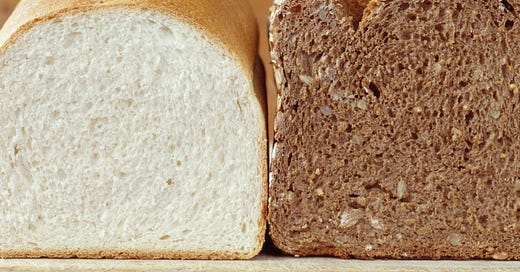Question: Are carbohydrates good or bad?
Answer: Carbohydrates are not all the same. Different types have good or bad effects on your body that influence your health. Scientists can determine these effects using two methods, called glycemic index and glycemic load, which look at the quality and quantity of carbohydrates in food. Accurate measurements are available in the U.S. and around the world. I think knowledge of these measurements can be useful for people at risk for diabetes, obesity or heart disease as well as those interested in a healthy diet.
Q: What is the glycemic index?
A: The glycemic index (GI) measures the ability of carbohydrates in foods to increase your blood sugar levels. The speed at which a particular carbohydrate raises blood sugar relates to its chemical structure, the food’s surface area available for digestion, and the presence of fiber or fat.
In the rating system, each food is compared with the effects of pure glucose (rated 100). Foods with a high glycemic index (more than 70) are digested quickly, providing you with fast burst of energy followed by an energy drop. On the other hand, low-GI foods—those with a GI under 55—release energy slowly over a longer period of time. The rate of glucose absorption is the main determinant of how healthful or harmful a carbohydrate is for your health.
Q: How is GI measured and used?
A: The GI score of common foods is analyzed in several laboratories around the world, including the Sydney University Glycemic Index Research Service in Australia. It’s based on the average blood-glucose response of 10 healthy volunteers over a period of two hours to a portion of food that contains 50 grams of digestible carbohydrate.
The GI score can be used to determine the carbohydrate quality of particular foods. Lower GI scores are usually associated with high-quality, wholesome foods such as vegetables, fruits, beans and whole grains. Higher GI scores tend to go along with less-nutritious processed foods such as French fries, cakes, white bread, or white rice. You can use the GI scores to identify your best carbohydrate choices.
Q: What are the health effects?
A: A large body of research has linked an excess of high-GI foods with a greater risk for diabetes, obesity and heart disease. This is because sharp spikes in blood sugar can create more inflammation in the body. In contrast, a diet that emphasizes low-GI foods is associated with lower inflammation, less hunger and weight gain, more sustained energy and endurance, lower cholesterol levels, and reduced risks for heart disease and diabetes.
Q: How does glycemic load differ?
A: How high your blood glucose rises, and how long it remains high, depends on the quality and quantity of carbohydrates you ate at a meal. The GI measures the quality. Glycemic load (GL) looks at both the quality and quantity to determine a food’s overall effect on your blood sugar level. The formula for GL is (GI times the grams of carbs per serving) divided by 100. It allows you to determine, for instance, that a small baked potato with a GL of 12 will have twice the metabolic effect on your blood sugar level as an apple with a GL of six.
Both measurements are useful. The GL helps you select portion sizes while GI helps you differentiate between good and bad carbohydrate choices. A healthy diet includes a variety of predominantly low-GI foods.
Sharp spikes in blood sugar can create inflammation in the body. Limiting sweeteners like sugar and honey and substituting whole grains for refined ones to help keep blood sugar levels on an even keel.
For more information: Glycemic Index Database, glycemicindex.com
This newsletter is for educational purposes only. It is not intended as a substitute for medical advice or treatment; before adhering to any recommendations in this newsletter consult your healthcare provider.





Thank you Elizabeth, I think you may have written this specifically for me😉
When it comes to bread, the glycemic load of your meal is also affected by how much butter or oil one puts on it.